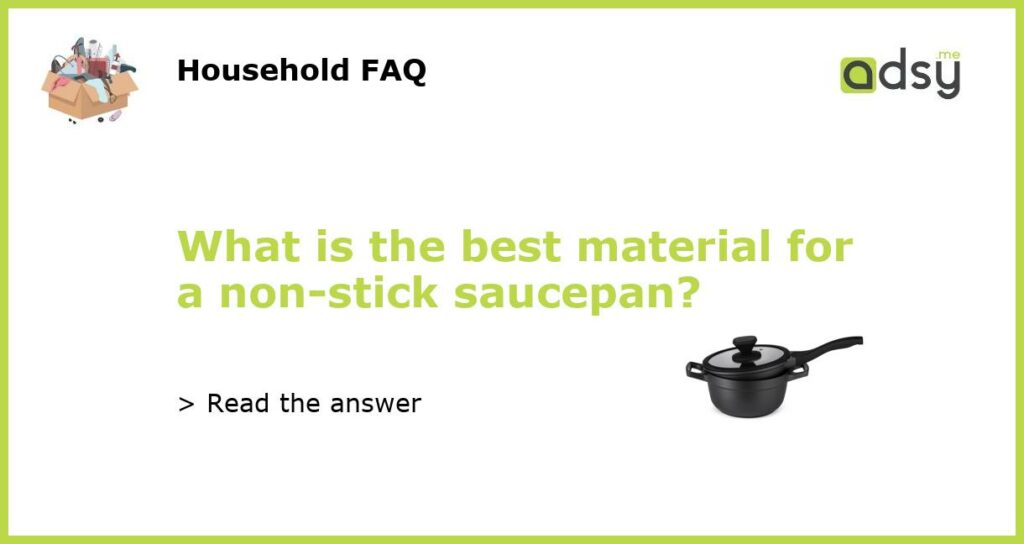The Best Material for a Non-Stick Saucepan
When it comes to selecting the perfect non-stick saucepan for your kitchen, choosing the right material is essential. The material not only determines the cooking performance but also affects the durability, safety, and ease of cleaning. With a plethora of options available in the market, it can be overwhelming to find the best material for a non-stick saucepan. However, after careful consideration, we have identified the top material that is widely regarded as the best choice for a non-stick saucepan.
PTFE – The Gold Standard for Non-Stick
One material that stands out when it comes to non-stick cookware is polytetrafluoroethylene (PTFE). Commonly known as Teflon, PTFE is the gold standard for non-stick coatings. PTFE is a synthetic polymer that comes with excellent non-stick properties, allowing food to slide effortlessly in the pan. It offers superb food-release, making it convenient to cook delicate items that are prone to sticking, such as eggs or pancakes.
The main advantage of PTFE is its low coefficient of friction, which gives it exceptional non-stick properties. Additionally, PTFE coatings are generally resistant to scratches and abrasions, making them more durable compared to other materials commonly used for non-stick cookware. However, it is worth noting that PTFE coatings can deteriorate over time, especially when exposed to high heat. Thus, it is important to follow the manufacturer’s instructions and avoid using metal utensils or subjecting the pan to excessive heat.
Benefits of PTFE Coatings
PTFE coatings offer several benefits that make them highly desirable for non-stick saucepans. Firstly, they require minimal fat or oil for cooking, promoting healthier cooking options. This can be particularly advantageous for individuals who are conscious of their calorie intake or dietary restrictions. Secondly, PTFE coatings are easy to clean. Food residues can be wiped away effortlessly, reducing the need for scrubbing or soaking. Additionally, PTFE coatings are non-reactive, which means they do not leach harmful chemicals into the food during cooking.
Another benefit of PTFE coatings is their versatility. PTFE is compatible with various cooktops, including gas, electric, ceramic, and induction. This flexibility allows you to use the saucepan on different types of stoves without any limitations. Furthermore, PTFE coatings are highly affordable compared to other materials like ceramic or stainless steel, making them an accessible option for most households.
Maintenance and Safety Considerations
While PTFE coatings offer exceptional non-stick properties, it is important to take proper care of the saucepan to ensure its longevity. Avoid using metal utensils, as they can scratch the coating and compromise its non-stick abilities. Instead, opt for wooden, silicone, or nylon utensils. Additionally, be mindful of the heat settings when cooking with a PTFE-coated saucepan. Excessive heat can cause the coating to degrade and release potentially harmful fumes.
From a safety perspective, PTFE coatings are generally considered safe for everyday cooking when used correctly. However, it is best to avoid using extremely high heat or overheating the saucepan, as this can release toxic gases. If you notice the coating peeling or showing signs of wear, it is recommended to replace the saucepan to avoid ingestion of any loose particles.






